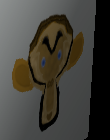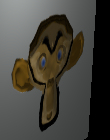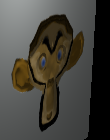Summer of Code has started just today (even if currently it is only a “Spring of Code” 😀 ) but a little contribution of mine has already made his way inside the SVN repository of PySoy.
But let’s start from the beginning…
After having shown to Arc an early draft of an UML class diagram for the current code I decided to come back to work on some test code I had written in the afternoon.
It was just a classical spinning cube demo to actually compare PyOpenGL versus Pyrex speed, I don’t report the results here because they are quite identical, if I haven’t done any mistake it should be the absolute minimum complexity of the code which actually determined this result.
Anyway, even without this proof I firmly believe in the power and speed of Pyrex. 😉
Going back to my commit, my changes affected a small yet important area of the code, I think we will remember it in the future. 🙂
BEFORE
In src/windows-glx/soy.windows.pyx:
gl.glClear(0x4100)
AFTER
In include/gl.pxd:
[...]
# Constants
ctypedef enum:
[...]
# glPush/PopAttrib bits
GL_DEPTH_BUFFER_BIT
GL_COLOR_BUFFER_BIT
[...]
In src/windows-glx/soy.windows.pyx:
gl.glClear(gl.GL_COLOR_BUFFER_BIT | gl.GL_DEPTH_BUFFER_BIT)
Was it better before or now? 😉





